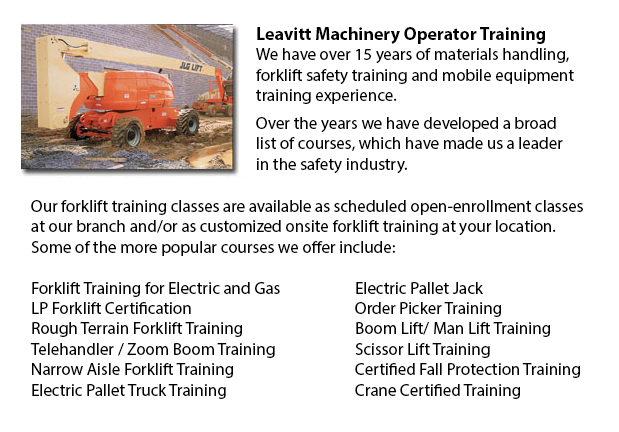
Kingston Boom Lift Operator Training - A cherry picker refers to a type of aerial work platform. Cherry pickers have a bucket or platform at the hydraulic lifting system's end. The machine is likewise called a boom lift, man lift, hydraladder or basket crane.
The bucket or platform is usually mounted on the rear of a huge vehicle such as a truck, which is sometimes known as a bucket truck. A stand-alone trailer, self-moving platform or flat back pickup van could likewise be used. The one working stands and starts working within the bucket. The individual in the bucket often includes an upper set of controls enabling control of the position of the bucket. The bucket's reach could be extended on various models by telescoping to adjust the lifting arm. Automatic safety controls prevent tipping. Articulated boom lifts are recommended for working within tight spaces or when it is necessary to clear obstacles.
As the name suggests, cherry pickers were made for picking fruit at high levels in trees. Cherry pickers are used in various other industries, like exterior painting, construction and mining. Occasionally they are made use of for cleaning windows on high structures. The devices are used to service cable television, electrical equipment and telephone on utility poles. Fire fighters sometimes utilize cherry pickers, know as snorkels, when ladders are inadequate. At Christmas season, civic workers can be seen within cherry pickers hanging banners and lights.
Boom Lift Operator Safety Training
The industry suggests Safety Awareness Training meets standards set by your local regulations. Curriculum includes safe operation methods through a combination of hands-on and classroom components.
Sessions consist of the following topics: general equipment safety factors; current regulations and applicable concerns; fall protection; features of boom lifts, various stationary work platform and scissor lifts.
Also included are the different lift operator's responsibilities, like for example: workplace checks; function test procedures; avoiding and knowing hazards; pre-operation inspections procedures; and equipment manufacturer's instructions.
-
Narrow Aisle Forklift / Order Picker Training / Electric Pallet Jack / Electric Pallet Truck Training in Kingston
A pallet lift is a piece of equipment dedicated in the moving of pallets of various dimensions and weights. They might be utilized as an accessory for forklifts, cranes and other styles of heavy machinery or be applied on their own. Pallet lifts are... More -
Kingston Forklift Training School
Kingston Forklift Training School - Forklift Training School - Industry and federal regulators have established the criteria for forklift safety training based on their existing regulations and standards. People wishing to operate a forklift must fin... More -
Kingston Scissor Lift Certification
Kingston Scissor Lift Certification - Scissor lift platforms are utilized at work locations to enable tradespeople - such as iron workers, welders and masons - to reach their work. Making use of a scissor lift platform is usually secondary to their t... More -
Kingston Boom Lift Safety Training
Kingston Boom Lift Safey Training - Boom lifts are a type of elevated work platform or aerial lifting device that are normally utilized in warehousing, construction and industry. Boom lifts could be made use of in practically whichever environment du... More -
Kingston Fall Protection Ticket
Kingston Fall Protection Ticket - Fall-related incidents are the number one reason of death in the construction business. The possibility for fall accidents very much increases based upon the type of work which is being accomplished within your workp... More -
Telehandler Training in Kingston
Telescopic handlers normally called telehandlers for short, are an extremely popular piece of heavy construction machinery. They are widely utilized in the construction and agricultural trades. These machines have farthest reaching ability and are ab... More -
Kingston Warehouse Forklift Training Programs
Kingston Warehouse Forklift Training Programs - Warehouses could either be retail, industrial or commercial facilities, functioning from bulk product retailing to product distribution services. Regardless of the type of warehouse, personnel inside wa... More -
Kingston Heavy Equipment Ticket
Kingston Heavy Equipment Ticket - Depending on the nature of the job at hand, the kind of construction machinery that a heavy equipment operator utilizes varies. Every type of equipment is built to do particular jobs in the most effective method comm... More

Forklift Certification Kingston
TOLL FREE: 1-888-254-6157
Kingston, Ontario
forkliftcertificationkingston.com
Email Us
About Us


